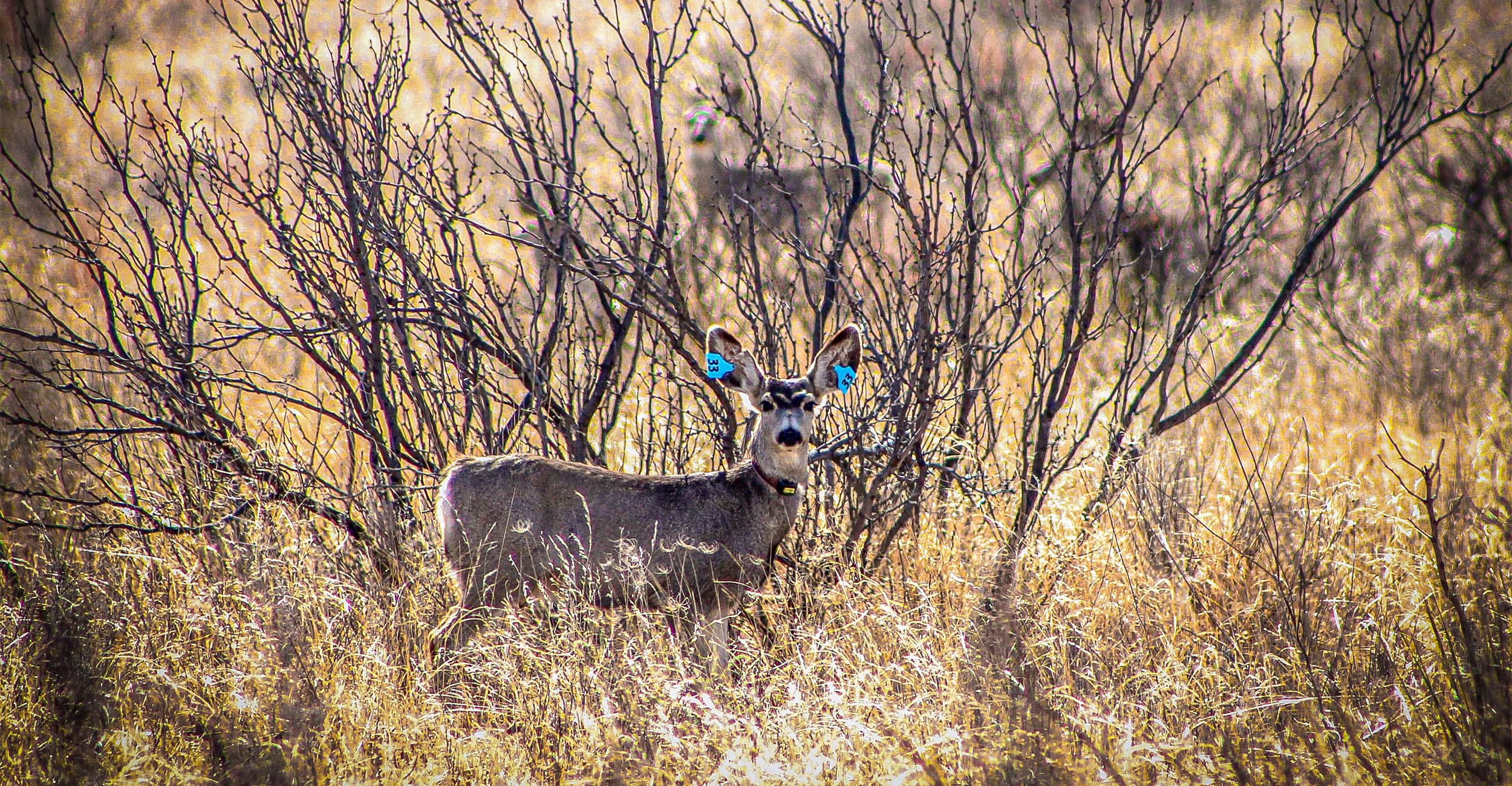
Cloudy with a Chance of Mule Deer: Researchers get answers from an understudied animal
Tuesday, May 28, 2024
Media Contact: Sophia Fahleson | Digital Communications Specialist | 405-744-7063 | sophia.fahleson@okstate.edu
In the flat expanses of western Oklahoma, researchers are studying mule deer to learn more about this animal’s movement, demography and survival.
The research team is gathering data for the Oklahoma Department of Wildlife Conservation to set regulations for these ruminants.
“Currently, there are no protocols for managing mule deer, which makes it difficult to understand their population numbers,” said Marcus Thibodeau, ODWC senior biologist.
Deer tags bought by hunters around the state can be used for both whitetailed and mule deer, so ODWC does not know what percentage of the mule deer population is harvested annually, Thibodeau said.
“A $2 million grant from ODWC through the Pittman-Robertson Fund spread throughout the next four years is very beneficial for this research,” said Anna Moeller, research assistant professor in the Oklahoma State University Department of Natural Resource Ecology and Management.
The mule deer research team is composed of faculty and graduate students from the OSU Ferguson College of Agriculture and the Caeser Kieburg Wildlife Research Institute at Texas A&M University-Kingsville.
“The research should help us come up with a better management strategy for these deer so their populations can be stable and safe for generations to come,” said Colter Chitwood, OSU NREM assistant professor.
“We have a unique animal here with us in Oklahoma, and hunters enjoy seeing them,” Chitwood said. “We can’t let this species die off because we didn’t do the research and put in the efforts to protect them.”
Mule deer are more particular about their home ranges than white-tailed deer. They prefer a rough terrain while white-tailed deer are open to just about any ecosystem, including suburban areas, Moeller said.
The first Oklahoma mule deer data collection and release was in early February 2024.
“After a deer arrives at our landing zone, we are focused on collecting biological samples and morphometric data,” said Molly Koeck, OSU NREM doctoral student. “Getting as much information as we can is crucial for answering questions pertaining to the Oklahoma mule deer population.
“We collect blood samples for physiology and diseases, fecal samples to assess diet, and hair and tissue for genetics,” she said. “We weigh each doe and measure her body length and rump fat thickness as a health assessment.”
One of the most important pieces of the study is to secure GPS collars on the does, Koeck added. The team can track movement and assess home range size as well as monitor survival.
“In under 20 minutes, we are able to get the biological samples and health assessment complete along with inserting vaginal implant transmitters in pregnant does,” Moeller said.
The transmitters will send a signal when a doe gives birth, Moeller added.
“When it comes to understanding how populations are doing, we get more information from the females,” Chitwood said. “The bucks can’t help us understand the birthing process or fawn survival.”
The first round of captured mule deer in state history was reassuring because all the does looked really healthy, Thibodeau said.
“Of the 69 does caught in the first five days, we collected more data than what has ever been collected before on mule deer in Oklahoma history,” Thibodeau added.
The hardest but most rewarding part of this research is answering the unique questions that have never been asked before and watching the students conduct the project successfully, Thibodeau said.
Help from private landowners makes this type of project possible, Moeller added.
In May, the team will begin tracking fawns for birth and death rates in western Oklahoma to learn more about the mule deer population, Koeck said.
“We positioned 91 cameras to monitor the deer,” said Levi Heffelfinger, assistant professor at Texas A&M-Kingsville.
“Being a part of this research is a unique experience,” Heffelfinger said. “The data we gather will help us improve our understanding of this species as a whole.”
Story by: Stacie Winner | Cowboy Journal
